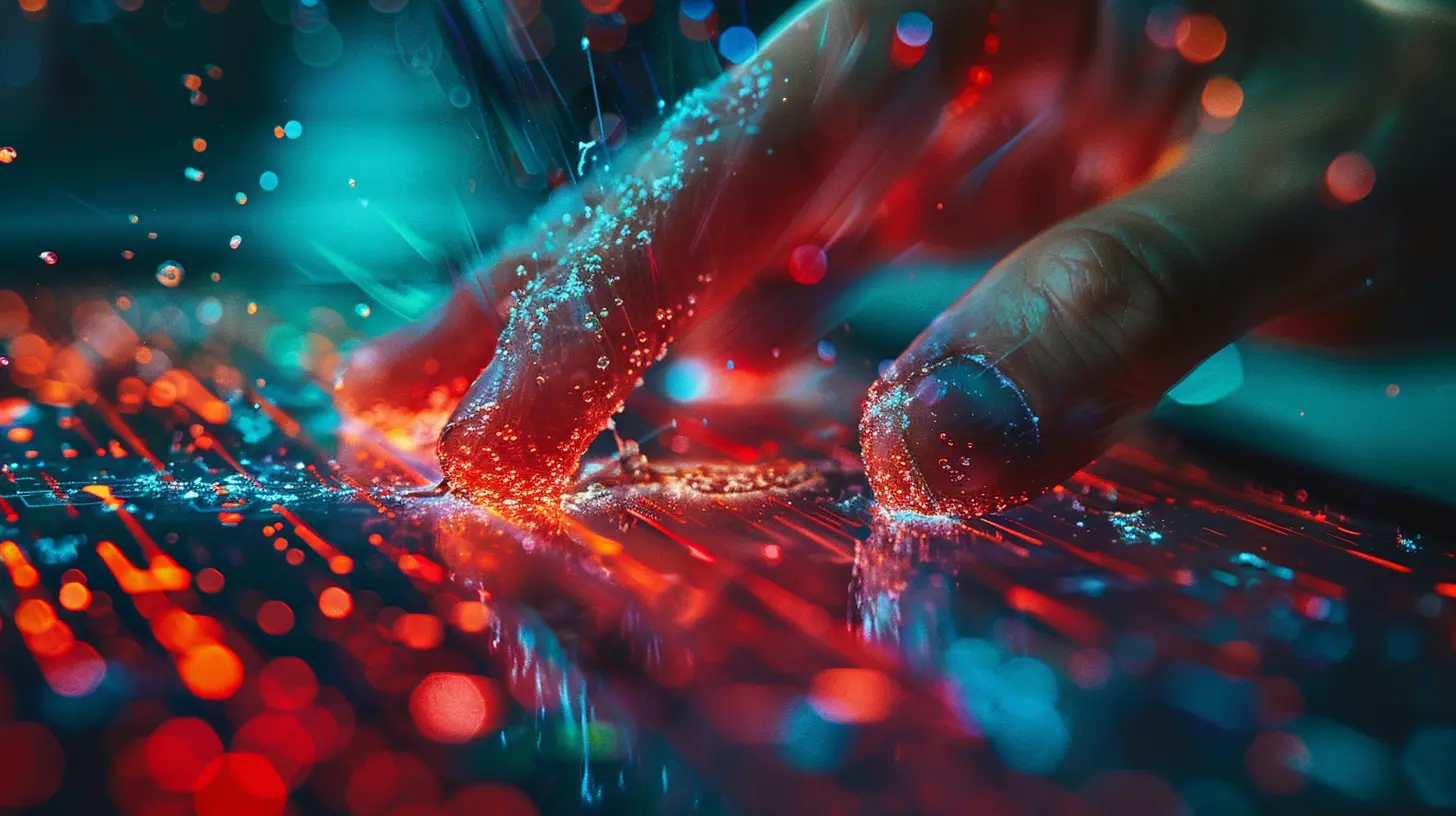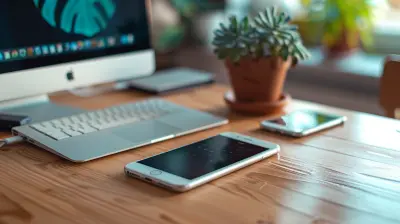Advancements in Touchscreen Durability and Scratch Resistance
13 November 2025
Let’s be honest — we all love our sleek, modern smartphones and tablets. But nothing can ruin that tech-crush faster than a deep scratch right across your screen or worse, watching your phone kiss the concrete and hearing that dreaded crack. If you’ve ever held your breath while checking your phone after a fall (let’s face it, we all have), you’re not alone.
Thankfully, the tech world has been hard at work addressing these nerve-wracking moments. Touchscreen durability and scratch resistance have come a long way, and the advancements in this space are nothing short of impressive.
So, grab a coffee and get comfy. We’re diving into how our touchscreens are getting tougher, smarter, and way more resistant to the daily abuse we throw at them.
The Evolution of Touchscreens: From Fragile to Fierce
Remember the early days of smartphones? You looked at them the wrong way, and boom — cracks, scratches, and frustration. Back then, durability wasn’t the priority. It was all about functionality and display quality.Now though, it's a different story.
Modern consumers demand screens that can take a beating. Manufacturers listened, and engineers began rethinking the very materials and structures that make up our screens. It's turned into a full-on tech arms race between materials science and device design. And honestly? We’re all benefiting from it.
The Heart of It: What Makes A Screen Durable?
Before we jump into cool materials and fancy coatings, let’s talk about what makes a screen “durable” in the first place.When people mention a durable touchscreen, they usually mean a mix of three things:
1. Scratch Resistance – Your keys, coins, and sand in your pocket? They’re not friends with your phone. Scratch resistance helps your screen survive everyday friction.
2. Shatter Resistance – Drops happen. A durable screen should absorb shock without turning into a spiderweb of glass.
3. Longevity – Over time, touchscreens should maintain responsiveness and clarity.
So, how do manufacturers achieve this holy trinity? Glad you asked.
Gorilla Glass: The Gold Standard in Durability
If you've ever looked into phone specs, you've probably seen the words "Gorilla Glass" thrown around. Developed by Corning, this is arguably the most recognized name in screen protection.What Is Gorilla Glass, Really?
It's not actual glass from a gorilla (though that would be wild). Instead, it's a specially designed alkali-aluminosilicate glass, engineered to be thin, light, and super tough.Over the years, Corning has launched multiple versions — each better than the last. Gorilla Glass Victus, for example, offers significant improvements in both scratch and drop resistance compared to its predecessors.
Why Is It So Effective?
Without diving too deep into science class, Gorilla Glass undergoes a chemical strengthening process. It’s soaked in a hot potassium salt bath, which replaces smaller sodium ions with larger potassium ions. This creates compressive stress on the surface — making it much harder to scratch or crack.Think of it like muscle-building for your screen — only it works at the molecular level.
Sapphire Glass: Tougher Than Your Average Rock
When you really want to go premium, sapphire glass is where it’s at.You’ll find this ultra-tough material on devices like the Apple Watch and some luxury smartphones. It’s made from synthetic sapphire — crystalline aluminum oxide that’s almost as hard as a diamond.
The Pros:
- Exceptional scratch resistance (seriously, it scores a 9 on the Mohs hardness scale — just below diamond!)- Clear and optically superior in some cases
The Cons:
- It’s expensive!- Slightly more brittle compared to Gorilla Glass, making it more prone to cracking on impact
So, while it's scratch-repellent, a bad drop can still ruin your day. That’s why sapphire glass hasn’t become mainstream on phones — at least not yet.
Ceramic Shield: Apple’s Armor for iPhones
With iPhone 12, Apple introduced something called Ceramic Shield, giving screen durability a major boost.Made in collaboration with Corning (yes, the Gorilla Glass people), Ceramic Shield fuses nano-ceramic crystals directly into the glass. The result? Four times better drop resistance than previous iPhones.
While Apple doesn’t reveal all the juicy technical details, what we do know is Ceramic Shield is designed to balance toughness with clarity — a delicate line that’s hard to walk.
Flexible OLED Displays: Bending the Rules of Durability
Foldable phones are literally changing the shape of what we expect from screens. But what about durability?Enter Flexible OLEDs
These aren’t your traditional glass displays. Flexible OLED screens use plastic substrates that allow them to bend and flex — and bounce back. Samsung’s Galaxy Z Fold and Z Flip are shining examples of this tech in action.Of course, plastic is inherently more scratchable than glass, but manufacturers are using ultra-thin glass (UTG) layered over plastic to find the sweet spot between flexibility and strength.
It’s not perfect yet, but give it a couple more years and we’ll see some crazy innovations here.
Scratch-Resistant Coatings: The Invisible Bodyguards
Durability isn't just about what's underneath the surface — it's also about what's on top.Manufacturers apply special coatings (like oleophobic layers) that repel oil from your fingerprints and provide minor scratch resistance. These coatings wear down over time, but they do help reduce microabrasions and keep your screen looking newer for longer.
Some Common Coating Types:
- Oleophobic Coatings – Resist oils and smudges- Hydrophobic Coatings – Repel water and moisture
- Anti-glare Coatings – Useful outdoors, especially in sunlight
Innovations on the Horizon: The Future’s Looking Tough
Tech never stands still, and that’s especially true when it comes to screen durability. Here are some cool things being tested or developed right now:Self-Healing Screens
Yes, you read that right. Self-healing materials are being designed to “heal” micro-cracks and abrasions over time. LG has tinkered with this before, and researchers are still exploring how to make these more effective for daily use.Imagine scratching your screen… and watching that scratch vanish the next day. Sounds sci-fi, right?
Diamond Glass
Synthetic diamond coatings are also being researched. These are ridiculously hard and could make screens nearly impervious to scratching. The biggest challenge? Making them cost-effective and mass-producible.Nanotechnology
Nano-coatings could be the next revolution. Think of it as protective armor on a microscopic level. These are lightweight, invisible, and super tough. Some options are already in the prototype phase for smartphones and wearables.Everyday Tips to Protect Your Screen (Even If You've Got the Toughest One)
Even with all these advances, no screen is completely invincible. Here are a few pro tips to keep your display looking crisp:- Use a screen protector – Yes, even with Gorilla Glass. Why not add an extra layer of defense?
- Avoid pockets with keys or coins – These are scratch magnets.
- Invest in a solid case – Especially one with raised edges around the screen.
- Clean regularly – Use a microfiber cloth and avoid harsh chemicals.
- Stay dry – Moisture can accelerate wear on coatings.
Touchscreens Are Getting Smarter — and Stronger
We’ve come a long way from fragile plastic screens that scratched if you looked at them wrong. Thanks to innovations in glass chemistry, manufacturing techniques, and layered protections, modern touchscreens are beasts.Are they perfect? Not yet. But the blend of science and design is getting us closer to screens that can survive daily life — and maybe even a few tumbles off the counter too.
So next time you drop your phone and pick it up without a scratch, give a little nod to the invisible tech warriors keeping your screen intact. It’s kind of like having a superhero living in your pocket.
Final Thoughts
Tech is evolving at the speed of light — and so is screen durability. From chemically strengthened glass and flexible displays to futuristic self-healing screens, we’re entering an era where broken displays might become a thing of the past.Whether you’re obsessed with the latest gadgets or just want your phone to last longer than a year, these advancements are great news. So keep an eye out, because the next big leap might be right around the corner — and your phone’s going to thank you for it.
all images in this post were generated using AI tools
Category:
Touchscreen DevicesAuthor:

Kira Sanders

